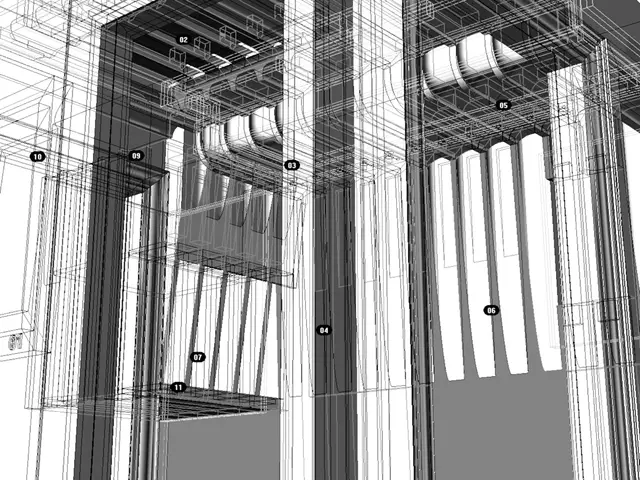Enhanced Privacy Technologies in Data Transmission and Internet Infrastructure
Privacy-Enhanced Technologies (PETs) are at the forefront of secure communication and data networking, with the latest trends and future developments centred around advanced cryptographic methods, integration with AI, edge computing, hardware security, and evolving regulatory compliance.
One of the key developments in PETs is the use of Zero-Knowledge Proofs (ZKPs), which enable verification of data or identity without revealing the underlying information. This makes them highly suitable for identification and authentication while adhering to data minimization principles. ZKPs are becoming increasingly crucial in privacy-preserving protocols for secure transactions and communications.
Another significant development is the adoption of hardware-backed PETs. Secure elements like embedded SIMs (eSIMs) and Trusted Execution Environments (TEEs) provide tamper-resistant environments for cryptographic processing and secure storage, complementing software PETs and enhancing overall security guarantees by protecting cryptographic keys and sensitive operations from physical attacks.
As quantum computing advances, developing cryptographic algorithms resistant to quantum attacks is essential to future-proof secure communication. This area of research, known as quantum-resistant cryptography, ensures data confidentiality even against adversaries with quantum capabilities.
Integration with AI and Machine Learning is another important aspect of PETs. AI-powered threat detection and anomaly detection provide smart, automated defence against cyberattacks. However, adversarial AI poses new challenges that require robust PET designs incorporating AI defence mechanisms.
The widespread adoption of Zero Trust models, which continuously verify and authenticate all access requests, is tightly linked with PETs to enforce fine-grained access controls and protect sensitive data in dynamic environments.
Processing data closer to the source via edge computing improves privacy by reducing the amount of sensitive data transmitted or stored centrally. This approach supports PETs in sectors like smart cities, healthcare, and autonomous vehicles. Decentralized internet technologies, including blockchain-based platforms, leverage PETs to protect privacy without centralized control.
Compliance with data protection laws, such as the GDPR and CCPA, is driving PET adoption to safeguard privacy while enabling secure data sharing and analytics. PETs help organizations reduce breach risks and avoid heavy penalties.
However, implementing PETs presents challenges, particularly in terms of performance overhead. Many privacy-enhancing techniques introduce latency or bandwidth consumption. Techniques like padding and mixing can prevent attackers from inferring information based on traffic patterns. Data minimization technologies like differential privacy and federated learning support the principle of collecting only necessary data.
Secure Multi-party Computation (SMC) enables multiple parties to jointly compute functions over their inputs while keeping those inputs private. Modern network infrastructure can incorporate privacy enhancements at multiple layers, with DNS privacy enhancements like DNS over HTTPS (DoH) and DNS over TLS (DoT) encrypting DNS queries to prevent ISPs and network operators from seeing which websites users are accessing.
In summary, the future of PETs in secure communication and data networking lies in combining cryptographic advances (like zero-knowledge proofs and quantum resistance), hardware security enhancements, AI integration, architecture shifts towards Zero Trust and edge computing, and strong regulatory compliance to protect privacy in increasingly complex digital environments.
Read also:
- Revitalize bouncing back: gaming sector rebounds from sales slowdown
- Rapid Growth in Bio-based Polypropylene Sector Anticipated at a Compound Annual Growth Rate of 26.5% by 2034
- Ford reveals cost-effective electric vehicle foundation, allocates $2 billion for Louisville factory upgrade
- Staggering USDC trading volume for Circle surges to an astounding $5.9 trillion, aiming to secure an early lead in the competitive market







